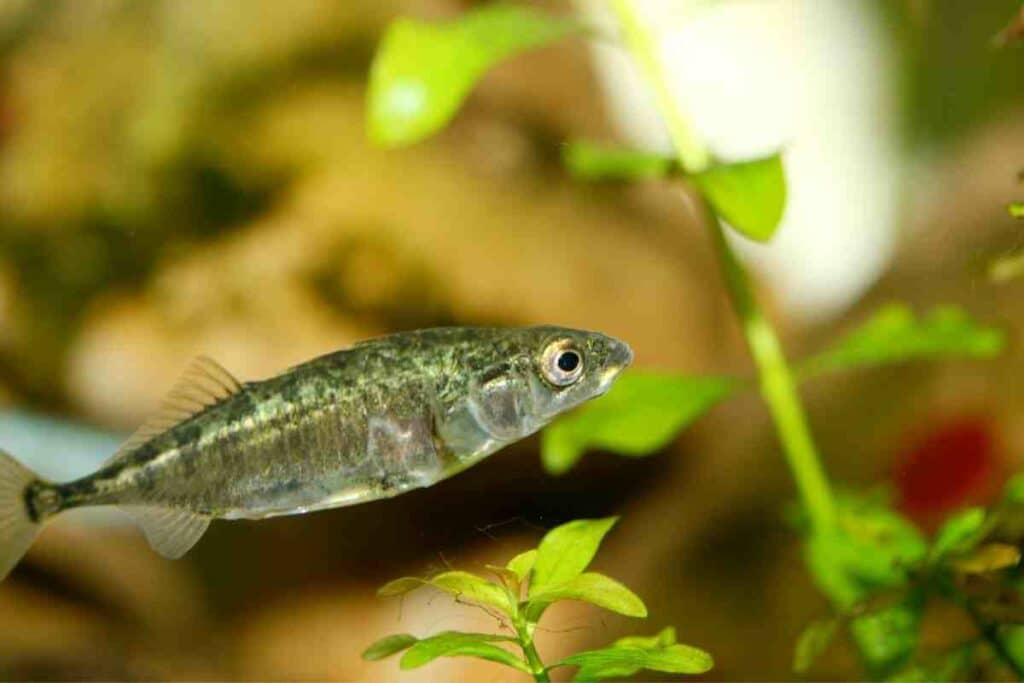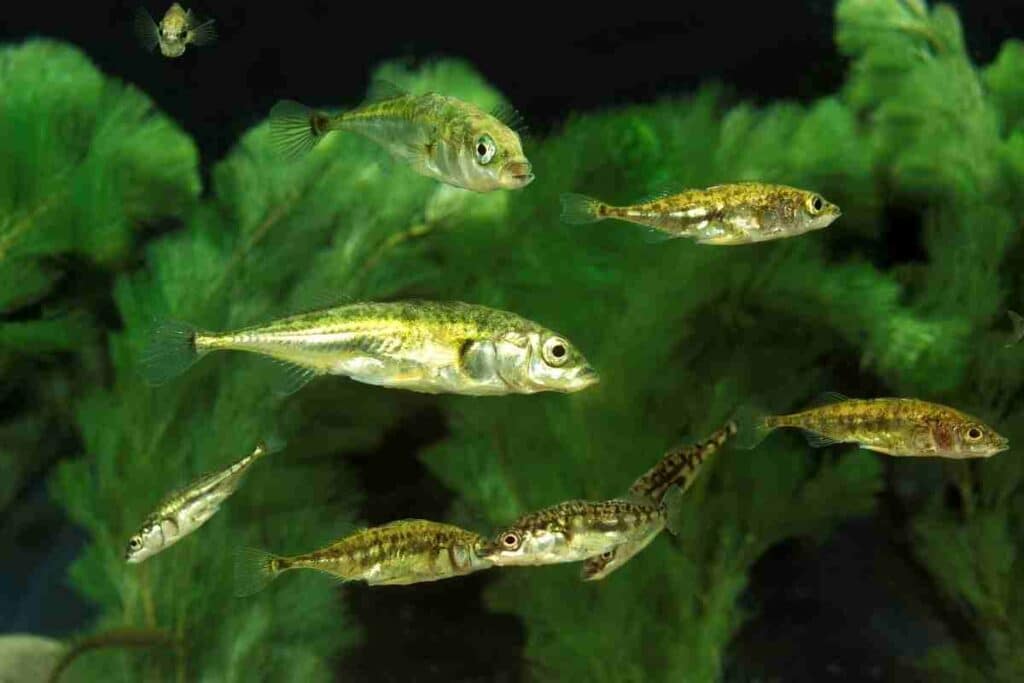Sticklebacks are an excellent choice if you have just installed a small garden pond. However, they can impact the amphibian and insect population.
The best way to maintain a sustainable ecosystem in your small pond is by avoiding larger species such as koi.
In the wild, fish have their natural habitat and share it with other wildlife. Such species can overwhelm small garden ponds and attack smaller animals, such as frogs and new tadpoles.
They can also contaminate the water unless you install filters.
This is why it’s advisable to construct independent fish ponds to rear different types of fish.

What are Sticklebacks?
The threespine stickleback, Gasterosteus aculeatus, is a small fish species with an average body length of 5cm. It can survive on both freshwater and saltwater bodies.
Sticklebacks can live for up to five years in a laboratory.
The average lifespan increases to eight years when you place this fish under captivity, like in a fish pond.
How do Sticklebacks Behave?
Threespine sticklebacks are social and like moving in shoals, regardless of their habitat.
They use these groups as protection against potential attacks from predators.
What Do Sticklebacks Eat?
As mentioned earlier, sticklebacks are predatory creatures.
Their diet mostly consists of crustaceans and larval insects. They occasionally feed on zooplanktons.
The predation cycle of these fish consists of four stages – searching, pursuing, attacking, and catching the prey.
What Eats Sticklebacks?
Some of the predators that attack sticklebacks include perch, salmon, trout, pike, kingfishers, herons.
Despite being predators, larger species feed on sticklebacks.
This is because sticklebacks are small, slow swimmers that move in large groups.
That said, this species has over time developed adaptation against predatory attacks.
It has bony lateral plates, dorsal spines, and a pelvic girdle with two anterior processes, pelvic spines and posterior processes.
Behavioral responses to potential attacks include moving in large groups, taking cover behind plants, and predator inspection.
How do Sticklebacks Reproduce?
Before the start of the breeding season, males develop a reproductive phenotype. Their eyes become blue, while the underbelly and throats become red.
When breeding starts, the male separates from other fish, constructs a nest, and establishes their territory.
The male then tries to attract as many females as possible to the best to lay eggs before fertilizing them all at once.
After laying eggs, females leave the nest.
The male takes care of the eggs until young ones emerge, which is usually up to ten days after fertilization, depending on the warmth of the water.
The preferred breeding grounds for Threespine sticklebacks include freshwater and saltwater sources, such as lakes, rivers, sea beds, drainage canals, etc.
These fish attain sexual maturity between one and two years, and breeding occurs annually from late spring to the first few weeks of summer.
What is the Ideal Stickleback Population?
Due to their fast reproduction rate, the ideal ratio of threespine sticklebacks in a small garden pond is two males for every five females.
Generally, this species is flexible but aggressive during the breeding season.
How do I Take Care of Sticklebacks?
Here’s how to take care of the sticklebacks in your garden pond.
Feeding Instructions
If your pond has an adequate number of invertebrates, you can get away with not feeding your sticklebacks.
When the supply dwindles, such as during winter and other unfavorable months, you might have to feed the fish with bloodworm, daphnia, shrimp, etc.
You can also add fish flakes to make the meals diverse and balanced.
Aquarium Care

It’s vital to keep your pond water clean, oxygenated, and free of contaminants.
With oxygen, you can supply it artificially using a pump or get it from natural pond weeds such as Elodea crispa.
When you introduce the fish into the water, do a partial water change of about 10%.
Ensure that you use a dechlorinator when changing the water to prevent damage caused by chlorine and other pollutants on your fish and pond.
What Fish Species Should I Avoid?
While sticklebacks are valuable to your pond ecosystem, here are the species you need to avoid if you plant to engage in fish farming.
- Perch, chub, and Zander, because they’re predatory.
- Wels catfish and pike, as they grow huge and are predatory.
- Tropical fish because they can’t survive the winter.
- Fancy goldfish, as they’re oversensitive, not hardy, and poor swimmers.
Wrapping Up
Sticklebacks are popular among fish farmers because they require little maintenance and can withstand harsh climate conditions.
If your pond has insects, amphibians, and clear, oxygenated water, this species can quickly reproduce itself.
The period between birth and sexual maturity ranges between one to two years.
Lastly, sticklebacks have excellent adaptability to various conditions. This means that they can survive in the wild and captivity.
